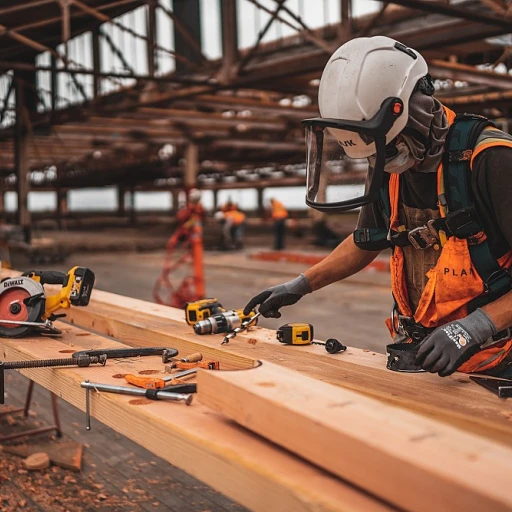The Evolution of Screw Machines
The Journey From Manual Operations to Automated Precision
The evolution of screw machines has been nothing short of transformative. From the early days of manually operated tools to the sophisticated CNC Swiss screw machines of today, the journey has been fueled by the need for precision and efficiency in manufacturing processes. Initially, these machines were purely mechanical. Early models, often referred to as cam-operated screw machines, relied heavily on manual manipulation and were limited in the complexity of parts they could produce.
With the introduction of automatic lathes, manufacturers began to see the potential for higher volume production. Automatic screw machines allowed for the cutting and shaping of components with improved precision, giving rise to a shift in how industries approached mass production. The capacity to produce complex parts with minimal human intervention led to a significant reduction in production time and cost.
Moving into the modern era, CNC screw machines have redefined the capabilities and applications of these traditional tools. They offer the ability to control multiple spindles simultaneously, enhancing both speed and precision. CNC machining has become synonymous with high precision and high volume production, often used in industries where intricate details are paramount.
This evolution hasn't just increased efficiency. It's pushed boundaries in terms of the workforce management technologies required to harness the full potential of these machines. As screw machines continue to evolve, their impact on manufacturing processes only grows, with an eye towards integrating more automation and advanced technologies in the future.
Types of Screw Machines and Their Applications
Exploring the Different Screw Machines and Their Industrial Roles
Screw machines have remarkably evolved over time, and today, they play an indispensable role in modern manufacturing. Whether dealing with high precision or high volume parts, different types of screw machines cater to varying industrial requirements.
Firstly, the traditional cam-operated screw machines are noted for their simplicity and effectiveness in producing medium-sized and small parts. These machines rely on cams to control the operational movements, which are ideal for high volume production with minimal complexity.
In contrast, CNC screw machines represent a leap in technology with their ability to handle complex machining tasks. These CNC machining tools are computer-controlled, allowing for precise and automatic production processes. They are particularly beneficial in scenarios requiring high precision and adaptability.
Swiss-type screw machines, also known as CNC Swiss machines, are specialized for small, high-precision parts. Their distinctive feature is the ability to handle bar stock, allowing for precision turning in long-shaft workpieces. These machines are renowned in industries requiring complex and intricate machining tasks.
Multi-spindle screw machines continue to be prominent in the mass production setting. These machines operate with several spindles, thus enabling simultaneous machining operations. This capability is crucial for reducing production times and increasing throughput, especially in high volume manufacturing environments.
Further elevating production efficiency, automatic screw machines utilize technology to perform repetitive tasks without continuous human intervention. Automatic lathes in this category enhance the throughput in high-volume and complex production scenarios.
For industries aiming to streamline operations, understanding these machines is critical. Each variant of screw machine provides unique advantages depending on the desired output—a premise extensively explored in our article on
enhancing workforce management with technology. This understanding is crucial in making informed decisions about which machine to deploy matching specific production goals.
Technological Advancements in Screw Machines
Unveiling Technological Innovations
The landscape of screw machines has dramatically shifted over the years, fueled by various advancements in technology. The seamless integration of computer numerical control (CNC) has particularly been groundbreaking in transforming traditional screw machining into a more sophisticated, automated process. CNC machines offer remarkable precision, enabling manufacturers to produce intricate parts with high accuracy. The transition from manual to CNC screw machines has empowered enterprises to boost production efficiency and maintain quality, even in high volume manufacturing.
The introduction of swiss type and multi spindle machines further exemplifies the evolution within this niche. Swiss screw machines, celebrated for their proficiency in manufacturing small, high precision components, have become indispensable, especially in sectors demanding meticulous detail. Meanwhile, multi spindle screw machines excel in high volume production, iterating on the capability to complete multiple operations simultaneously, thereby reducing cycle times significantly. This dual adoption allows industries to address both small scale and large scale production needs efficiently.
Moreover, the automation brought forth by these technological innovations extends beyond just CNC controlled mechanisms. Machine shops today deploy automatic lathes and bar feeders, minimizing manual intervention and lowering the chance of human error. Such tools ensure precision and consistency, which are vital in meeting stringent manufacturing standards. The utilization of these advanced tools ensures that the most complex requirements in terms of geometric dimensioning and tolerancing are adequately addressed.
Another pivotal advancement is found in tools and spindles, enhancing flexibility and precision. Today's screw machines often come equipped with premium quality turning tools designed to handle diverse materials seamlessly, including metals and plastics, while optimizing tool life span and reduced downtime.
At the core, the synergy between technology and screw machines fine-tunes the machining process to be both time-efficient and cost-effective. As manufacturers continue to embrace these state-of-the-art technologies, the realm of automatic screw machining consistently transforms, promising advancements that align with future manufacturing prospects.
Automation and Screw Machines
The Integration of Automation with Screw Machines
In modern manufacturing, automation has seamlessly integrated with screw machining, especially enhancing processes within CNC machining systems. The incorporation of automation is witnessing a continuous evolution, with CNC screw machines and Swiss screw technology leading the charge. These systems prioritize precision and efficiency, making them suitable for high volume and high precision manufacturing tasks.
Automated CNC machines, particularly those of the single spindle or multi spindle screw type, are revolutionizing production line capabilities. These machines handle complex tasks with minimal human intervention, thanks to advancements in CNC machining and bar feeder technology. A bar feeder systems allow automatic lathes to be continuously supplied, optimizing the volume production of small to medium sized parts. With such automation, manufacturers can achieve consistent quality while significantly reducing downtimes and labor costs.
Moreover, Swiss type machines, characterized by their high precision and compact design, benefit extensively from automation. They are renowned for producing intricate parts with tight tolerances, thanks to their ability to execute continuous turning operations with precision tools. Automation in Swiss type and multi spindle setups ensures that these machines maintain top-tier output while mitigating human error.
The capabilities of cam operated machines have also been boosted through automation. Although traditionally manual, these systems now integrate automatic controls, enhancing their operational efficiency and allowing them to remain competitive in a CNC dominated environment.
In conclusion, as automation continues redefining the landscape of screw machining, businesses leveraging these advancements ensure not only enhanced productivity but also a strategic advantage in the ever-competitive manufacturing sector. By automating screw machines, industries can uphold high standards in production, ensuring each precision component meets contemporary manufacturing benchmarks.
Challenges in Implementing Screw Machines
Screw Machine Integration Hurdles in Modern Production
Integrating screw machines into today's manufacturing processes provides numerous benefits, including high precision, capacity for volume production, and efficiency in machining complex parts. However, this integration doesn't come without its share of challenges, especially when dealing with CNC, multi spindle, and Swiss screw machines.
One of the primary challenges that manufacturers face is the initial cost and setup of these machines. CNC screw machines, for example, demand a significant upfront investment. This can be particularly burdensome for small to medium-sized enterprises focused on precise and automated volume production. Additionally, the setup of these complex machines requires detailed planning and calibration to accommodate various manufacturing needs.
A second obstacle is the requisite expertise and skill in operating these machines, especially for CNC machining and multi spindle screw operations. Training employees is crucial to maximizing the machines’ efficiency and preventing downtime. Despite being automatic screw and swiss type lathes, a deep understanding of the tools, spindles, and the machining process is essential to maintain production quality.
Maintenance and upgrading of screw machines also present considerable challenges. Consistent maintenance is vital to prevent unexpected breakdowns and to prolong machine lifespan. Moreover, advancements in machine technology continually push manufacturers to invest in regular upgrades to keep their production lines competitive. While the move towards automation aids in reducing manual labor, it requires ongoing technical support and software updates.
Lastly, there is an inherent challenge in achieving and maintaining high precision while accommodating high volume production demands. Manufacturers must employ very effective production planning and continuously monitor for inconsistencies in output, particularly when dealing with automatic lathes or swiss screw configurations. As screw machining technology continues to evolve, overcoming these hurdles becomes essential to harnessing the full potential of these highly specialized machines.
Future Trends in Screw Machine Technology
Emerging Trends and Innovations
In the ever-evolving landscape of manufacturing, screw machines continue to adapt and innovate to meet the demands of modern production. These machines, which play a crucial role in high precision and high volume production, are experiencing significant trends that manufacturers need to keep an eye on.
One of the most prominent trends is the integration of CNC technology in screw machines. CNC screw machines enable precise control over the machining process, allowing for the production of complex parts with tight tolerances. This trend toward CNC machining opens opportunities for manufacturers to improve efficiency and accuracy, particularly in activities like turning and automatic machining.
Swiss screw machines, known for their precision and capability in producing small to medium-sized parts, are also evolving. Swiss type CNC machines are increasingly favored for their ability to handle complex tasks and are particularly effective in sectors requiring high precision, such as medical device manufacturing.
Another trend to watch is the shift towards multi-spindle automatic lathes and multi spindle screw machines. These machines are designed to maximize productivity by allowing simultaneous machining operations on multiple spindles. This is particularly beneficial for high volume production, as it reduces manufacturing time and costs.
Automation continues to permeate the screw machining industry, with automatic screw machines and automatic lathes becoming more prevalent. Automation reduces the reliance on manual labor, enhances consistency in production, and increases overall manufacturing efficiency. This trend not only improves production rates but also ensures greater consistency in complex machining operations.
However, despite these advancements, challenges remain, such as the integration of these technologies into existing manufacturing systems and the need for skilled personnel to operate and maintain these advanced machines.
As we look to the future, the development of more sophisticated cam-operated lathes and further enhancements in CNC swiss technology are expected. These innovations hold the promise of even greater efficiency and precision in screw machine applications, solidifying their role in the manufacturing industry. To stay competitive, manufacturers must adapt to these trends, leveraging advancements in multi spindle and single spindle technologies to optimize their production processes and meet the growing demands for precision parts.













